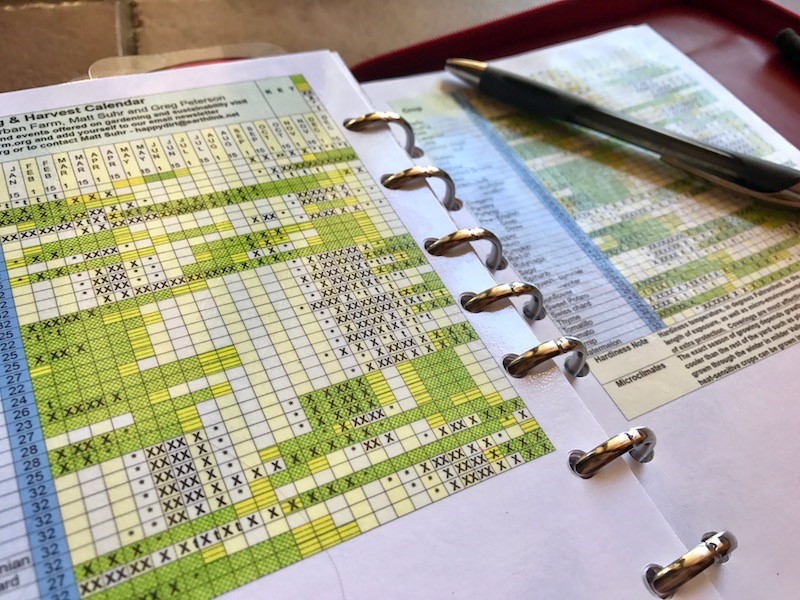By Cricket Aldridge, Urban Farm Lifestyle Editor
One of the coolest things about gardening in the Sonoran Desert is that we can grow every month of the year, with the hardest time to grow being July through September, although it can be done. Especially if you download The Urban Farm’s Low Desert Planting Calendar.
Arizona Farm Bureau’s Fill Your Plate asked The Urban Farm to show what’s best to plant what month.

For your jump start on planting, here are some guidelines to keep in mind throughout the year.
August • September • October
At this time of year, desert gardeners are chomping at the bit to get their Fall garden growing. Towards the end of August, we can start sowing seeds for brassicas (broccoli, kale, cabbage, cauliflower, and brussels sprouts) as well as one last round of corn and squash. Make sure to leave room in your garden for when October rolls around though! This is prime time for peas, garlic, onions, herbs, lettuce, and the list goes on!
October • November
This is a wonderful time for growing a continual supply of greens, radishes, beets, and lettuces using succession planting by sowing seeds as weekly or bi-weekly intervals rather than all at once. Delicate greens, like lettuce, could be planted in September if it is cool enough, just know that the high temperatures could cause your crop to die or bolt (go to flower and seed.)
November • December
November is an interesting month because it can still be warm enough to plant, and then suddenly, we get hit with the first frost of the year and that slows everything down. Tomatoes and peppers, you have growing are not going to like that so now would be a wonderful time to get your frost cloth out. You can keep planting if you have room. Peas, beets, carrots, greens, and brassicas can still be added, along with dill and fennel. If you are a tomato or pepper lover, December is the time to start your seeds indoors. This gives them enough time to be ready to plant in the garden as soon as soon as we are past the last frost date, which is usually around February 15 in the low desert. If you want access to the largest variety of these vegetables, then pull out the seed catalogs and have your seeds in hand for December 1. Don’t forget to start your eggplant indoors too.
January • February
January is the coldest month of the year. Hardy vegetables like kale and broccoli don’t mind our kind of cold usually, and in fact, get sweeter after a frost. As we move into February, the temperatures heat up and you can replant fall crops that you may be running out of, like beets, turnips, carrots, lettuce, and peas. Don’t be tempted to plant brassicas like broccoli, though! They tend to bolt as the temperature rises in the spring. They still show up in the nurseries, but don’t waste your time or money.
February, like October, is a planting frenzy. Not only can you transplant tomatoes and peppers, but all the vegetables most people associate with summer are planted then. Zucchini, lettuce, basil, herbs, cucumbers, and melons can all be started outdoors. One thing to keep in mind, however, is they all need to be planted well after our last frost date. If you do transplant things like tomatoes and summer squash before then you may lose them to the cold. Sometimes it’s worth the risk, though, just to give them a head start before the heat sets in.
March • April
March is the time to finish up the spring planting so that your vegetables don’t get zapped by May and June’s heat wave just when they are starting to ripen. In addition to February’s list, you can plant green beans, lima beans, corn, eggplant, jicama, pumpkins, and watermelon. Wait until April to plant sweet potato slips, they like it a little warmer. Another warning here, DO NOT plant tomatoes at this time. You’ll see them in the stores, but it’s too late for you the gardener!
May • June • July
Summer here in the low desert is when those new to the valley really get the wind knocked out of them in the garden. Almost everywhere else in the country, this is the prime, and sometimes the only, planting season. The Urban Farm Planting Calendar is going to make that transition a little easier. Don’t despair about these summer months though, because there is still a lot you can plant that those in colder climates can’t. You can grow peanuts, black-eyed peas, yardlong beans, hibiscus sabdariffa, jicama, loofa, Armenian cucumbers and okra to name a few. Don’t forget to grow another round of pumpkins for Halloween too.
The next time you hear someone tell you that you can’t grow anything in the desert, just share with them The Urban Farm’s Low Desert Planting Calendar. They will thank you for years to come.
For a searchable list of tried-and-true recipes, farmers’ markets and Arizona-grown products go to Fill Your Plate. Their weekly blog features stories like ours three times a week.

